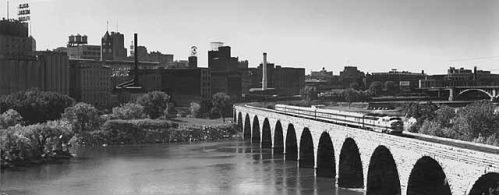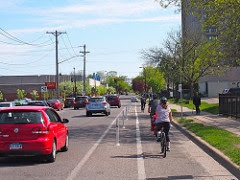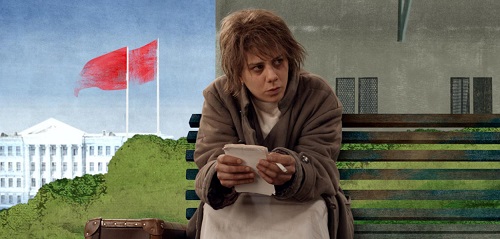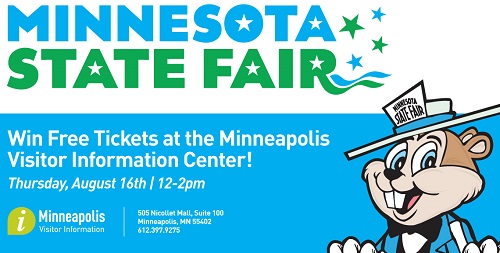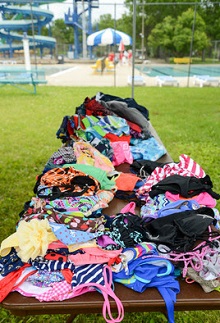Via an August 21 News Release:

Music is available at no cost to library users!
This week, Hennepin County Library is amplifying its online music platform, MnSpin, with more than 70 additional albums by local artists. The new work includes standouts such as Atmosphere and Brother Ali, and brand new acts launching their first records. Added to the 50-plus albums shared last year, the whole curated collection of local artists’ albums is available to library patrons and music seekers worldwide.
Inspired by models already cranking on library websites based in places like Seattle, Portland and Nashville, Hennepin County Library staff worked last year with Madison-based MUSICat to create a platform to accept submissions from musicians, and make the tracks available via the library’s website.
Good for musicians, good for listeners
Since the December launch, library patrons and others have streamed and downloaded more than 20,000 songs. In a musician survey last spring, three-quarters of respondents said that participating in MnSpin had brought more attention to their music.
“We have been so pleased by the enthusiastic reception MnSpin has received, and by the benefit to our participating musicians,” said Library Director Lois Langer Thompson. “We hope that by participating in our rich and diverse local music scene, we will continue our work to make the library inclusive and welcoming to more people in our community and beyond.”
A playlist picked for you
For the latest round, the library worked with seven volunteer curators and three staff members to cull almost 300 contributions down to about 70 additions to the collection.
10 curators included local music leaders and library staff members who have deep roots in the Twin Cities music scene:
Dan Gaarder, a performer with the Jayhawks, Trailer Trash and the Roe Family Singers
Maria Jette, vocal performer of classical and contemporary music
Brianna Lane, singer-songwriter and executive director/co-founder of The Warming House
Andrea Pierre, founder/co-host of radio talk show The Discourse on 98.9 KRSM
J.D. Steele, member of The Steeles and director of the MacPhail Community Youth Choir
Malik Watkins, aka MaLLy, independent hip-hop artist. Performer and teaching artist
Bo Weber, alternative/pop solo artist and creator of the online publication, Music In Minnesota
Jonathan Copeland, Hennepin County librarian
Alyssa Kuglin, Hennepin County Library staff
Murphy Baker, Hennepin County Library staff
Watkins, a new curator this round, said the picks that made the collection were pretty clear-cut. MnSpin presents opportunities for artists and for the library, he said.
“Some people say all exposure is good exposure, but I think MnSpin is a new spin on how the library is perceived, too,” he said. “It’s a good way to give people a different perspective on the library, and that [the library is] paying attention to how music is consumed. It’s just another avenue for folks to explore. It gives everyone a seat at the table, that their interests are being met.”
A ticket to listen
Your Hennepin County Library card is a ticket to stream or download music from MnSpin; and music lovers everywhere can discover and stream music created in our hometowns. For decades, Minnesotans have been musical innovators. Hennepin County Library is proud to play a part in spreading the word about new, sometimes undiscovered, and always varied music that is constantly being created in Minnesota.
The final MnSpin collection includes, rock, hip-hop, folk, country, R&B, jazz, international music, children’s music and more. Some of the artists who contributed work in 2017 are back again with new albums.
The artists being added to MnSpin include some who have been recording and performing in major venues for years, and others who are brand new to the Twin Cities scene.
PaviElle French, known by her music fans simply as PaviElle, decided to enter her album, Fear Not, after hearing about MnSpin by word of mouth.
“Growing up, I was really into music,” she said. “I grew up in the Rondo neighborhood in St. Paul and went to Lexington Library a lot to check out CDs and books. I thought that was really cool they were adding local people because I discovered a lot of music at the library.”
It’s important to offer access to music for free to listeners, she said.
“I appreciate being able to put it out to the public like that. I think it’s great access for people who can’t necessarily pay for it or can’t go to a show. I hope the program itself grows and that it continues to spread to more libraries. … Things like that keep the library alive and keep learning alive.”
Thanks to the Friends
MnSpin would not be possible without help from the Friends of the Hennepin County Library, the system’s funding partner, which along with other support, provided a $200 per-album stipend for each act.
Find the names of the other inaugural artists at MnSpin, or browse from hclib.org/arts-culture.
Please contact us for connections to curators and participating musicians.
Look for more news on the Hennepin County Library website at hclib.org.
 Friday, August 24, 2018 at 7:10AM |
Friday, August 24, 2018 at 7:10AM |  Kim Eslinger |
Kim Eslinger | 
